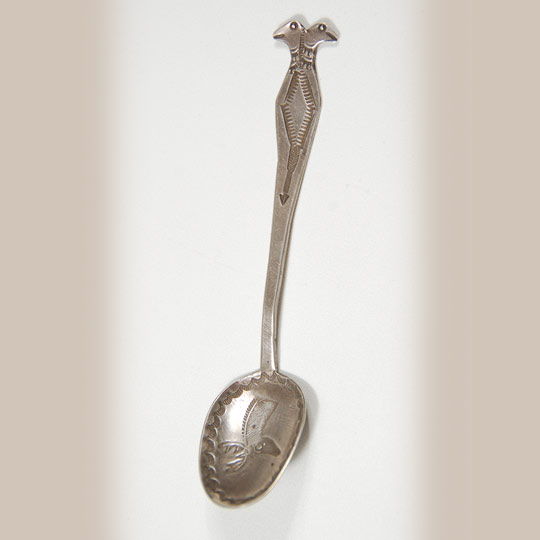Adobe Gallery Blog
Subject: Silver Navajo Spoon with Double Headed Bird on Handle
Indian traders were significant influences on Native artists in determining what the artists were to make. It was the traders who knew what they could sell so they instructed the artists to make those items. In addition to traders, government-sponsored Indian schools were an influence as well.
Carlisle Indian School in Carlisle, Pennsylvania, founded in 1879, was the first federally run Indian boarding school. One of its functions was to teach the students a trade, and one of the trades was silversmithing. A 1910 brochure from Carlisle promoted "Navajo silver items produced at the school, hand-hammered out of Mexican silver dollars."
This silver spoon features a double-headed bird at the handle's end and a deer's head in the bowl. The hand file marks are quite visible on the back of the handle. This spoon dates to circa 1910-1915.
Condition: original condition
Provenance: Alan Kessler Gallery, Santa Fe
private collection of a Virginia family
Recommended Reading; Navajo Spoons: Indian Artistry and the Souvenir Trade, 1880s - 1940s by Cindra Kline
Subject: Silver Navajo Spoon with Double Headed Bird on Handle
Unknown Maker
Category: Silverware
Origin: Diné - Navajo Nation
Medium: sterling silver
Size: 4-1/8" long
Item # C3393D


